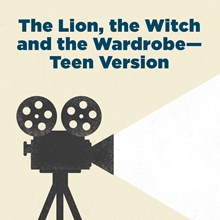Overview
Lewis's story is a tale rich with metaphors that reflect our sinful failures and God's endeavors to save us from their consequences. This study will explore the ways in which the adventures of the four Pevensie children in Narnia illustrate humankind's corruption and sinful behavior, the role of conscience, the power of trust, the value of forgiveness, and the way that Christ's sacrifice and resurrection liberate us from death's curse.
Discussion Guide
• Movie Summary
• Discussing the Scenes
—Getting Along with Others
(Proverbs 20:3; Hebrews 12:14–15; James 1:19–20; 3:13–18; Romans 12:9–21; 1 Corinthians 13:1–8)
—Listening to Our Conscience, Repenting, and Drawing Near to God
(James 4:7–10; Romans 7:15–25)
—The Appeal of Evil
(Genesis 3:1–24; James 1:13–15; Ephesians 6:10–18; 2 Corinthians 12:7–10; 1 Corinthians 10:12–13; Galatians 6:1–6)
—Edmund's Salvation from the Law
(Romans 8:1–11; Jeremiah 13:23; Ephesians 2:8–9; Romans 6:20–23; Matthew 20:25–28; Hebrews 9:11–15; 1 John 3:8; Galatians 3:10–14; Matthew 28:1–10; John 20:11–18)
—Always Winter, but Never Christmas
(Job 1:6–7; 1 Peter 5:8; Genesis 2:7; Matthew 8:23–27; 27:51–55; Luke 23:44–46; Revelation 21:1–4, 22–27)
• As the Credits Roll
Based On
The Lion, The Witch and The Wardrobe (Walt Disney Pictures and Walden Films, 2005), directed by Andrew Adamson, rated PG.
Photo © Copyright Walt Disney Pictures and Walden Films
Total number of pages—





